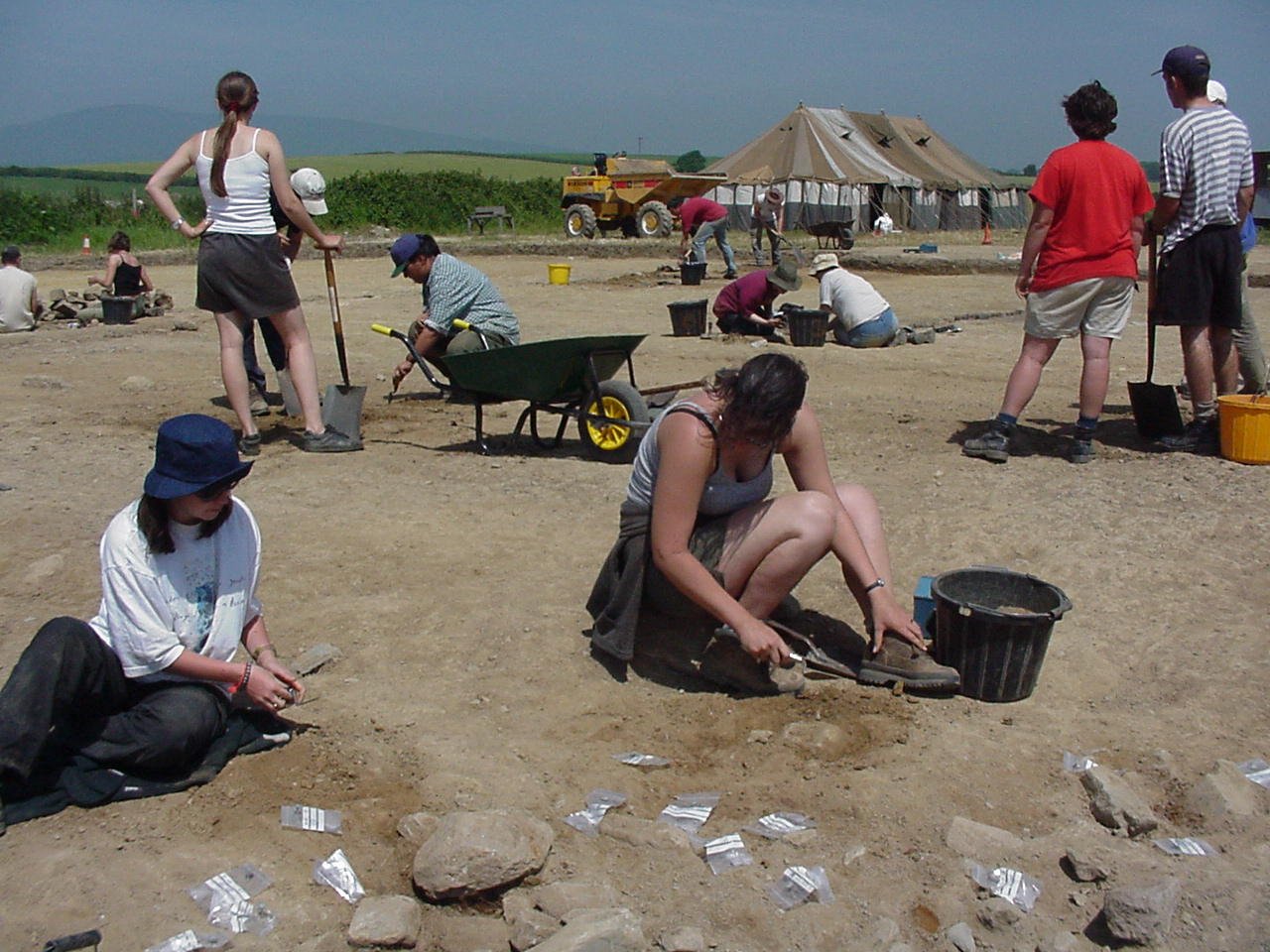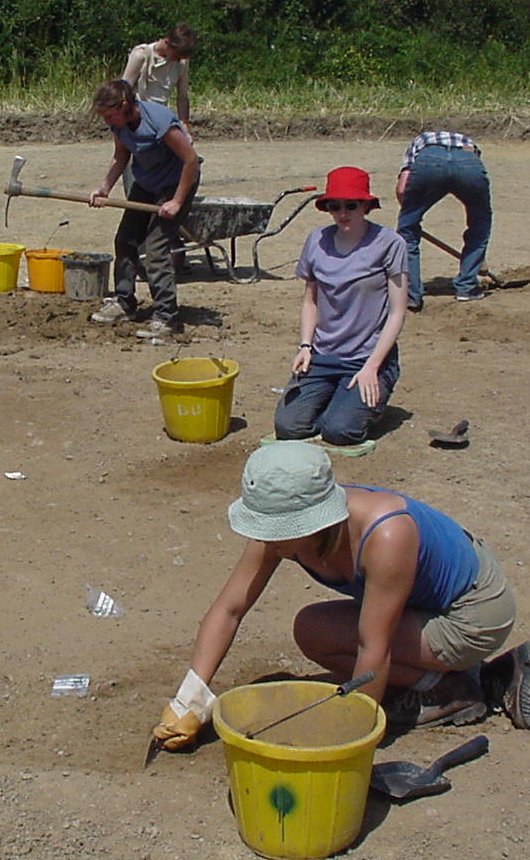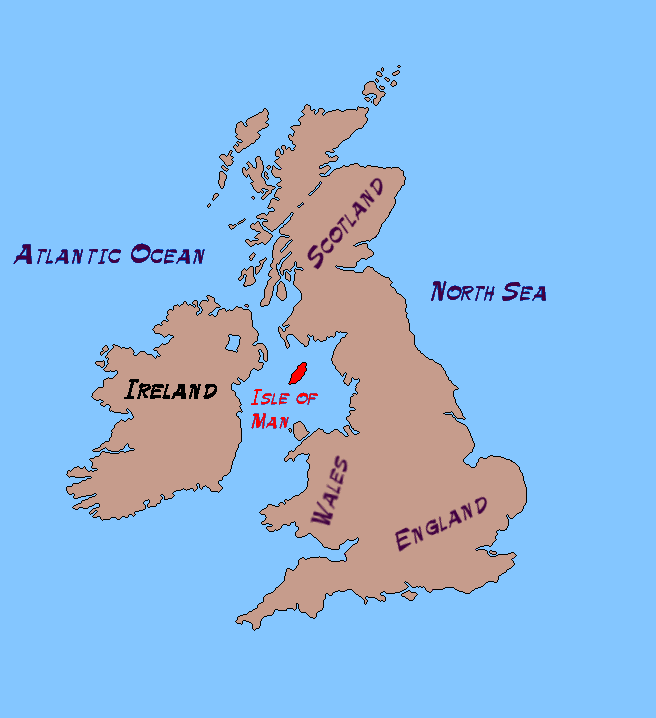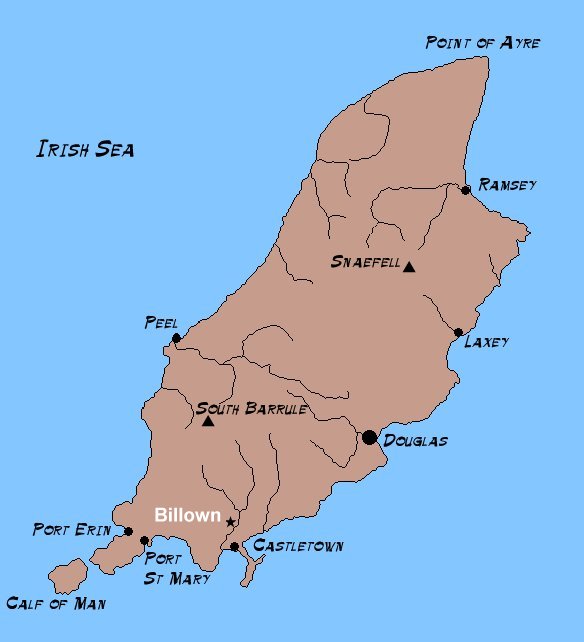Opportunities to participate in the summer field school
-
The ninth season of excavations
and survey will take place at Billown, Isle of Man, between Monday June 14th
and Sunday July 11th 2004. The programme of work in 2004 will include
the excavation of Neolithic features associated with a causewayed enclosure
and Iron Age structures forming part of a small settlement or industrial site.
Geophysical, topographic, and environmental surveys will be carried out in
the surrounding countryside. Applications are now invited from individuals
wishing to join the project either as volunteers or as students wishing to
gain credit rated experience. The project is run as a university field school.
Background

The Billown area north of Castletown in the Isle of Man is extremely rich in prehistoric remains. These include a stone circle, numerous standing stones and four round barrows. Fieldwalking by Robert Farrar identified a flint scatter in an area identified for quarrying, which in turn prompted a field evaluation and watching brief in 1993. With further expansion of the quarry planned over the next few years, the site and its surroundings has been adopted as the focus for a wide-ranging landscape investigation aimed at developing an understanding of the way the area was used and structured during prehistoric times.
The first season of work in 1995 took the form of an extensive evaluation of the land identified for quarrying. It involved test pitting, geophysical surveys, and the excavation of seven trenches. This was followed by the large-scale excavation of areas known to contain Neolithic, Bronze Age, and Iron Age deposits in 1996-2000.
The earliest finds so far are Mesolithic flints, including fine tanged points of the later Mesolithic. Features of late Mesolithic date have also been revealed. During the middle Neolithic, about 4000 BC, things really got going on the site. A causewayed boundary reminiscent of those found at major enclosure sites in southern England crossed the hill on which the site stands. It has been traced for over 140m by geophysical survey, and about 50m of it has been excavated. Finds include dozens of leaf shaped flint arrowheads which might suggest it was defended against unwanted human or animal invaders. Moreover, the ditch had been re-dug on several occasions and in its latest phase a line of upright stones was set up along the inside edge. By about 2500 BC the enclosure had probably gone out of use, but people were still using the hill. Four earthfast jars in the Ronaldsway style have been found, along with a mini-henge, cremation pits, a long mound or cursus monument, a pit circle, and numerous pits and shafts.
By about 1000 BC respect for the earlier sites had gone, and the hill was intensively farmed. A series of five or six round houses was uncovered on the highest part of the hill and these will be examined in the 2002 season. Later still, around 300 BC, the site was the focus of a small metalworking industry in which iron and copper were worked into trinkets and ornaments.
Much remains to be discovered at Billown. The eighth season of fieldwork in the summer of 2004 will focus on exploring Neolithic features to the north of the main enclosure boundary, including pits and a section of the Neolithic boundary ditch as well as Iron Age structures and associated features. In addition to work at the main Billown Quarry Site it is hoped to continue the programmes of geophysical and topographic survey at nearby sites.
For more information about the site or the dig experience please see the Billown research pages.
Opportunities

The Billown Neolithic Landscape Project is run by the School of Conservation Sciences at Bournemouth University in association with Manx National Heritage. The Project thus combines research into the Neolithic and Bronze Age of the Isle of Man, rescue of an important site prior to destruction by quarrying, and training through being a field-school for HND and undergraduate students of Archaeology and Heritage Conservation at Bournemouth University. About 80 students and staff will be working on the Project.
Two kinds of external participation are offerred:
Volunteers. Whether experienced in archaeology or not, volunteers are welcome to join the field-school on a weekly basis. In addition to work on site, including, where appropriate, tuition in the application of methods and approaches, volunteers can participate in the programme of seminars and lectures. A Certificate of Attendance will be given to all volunteers.
Students. Individuals engaged
in a programme of study relating to archaeology anywhere in the world are
welcome to join the field-school for one of the four weeks blocks as
students. The dates for this option are 9th June through to the 7th June inclusive.
The course is fully validated; it is credit-rated at 20 Credits in Level 2
of an undergraduate Honours degree programme. Assessment is based upon coursework
comprising continuous assessment of practical competence in archaeological
investigation, together with an excavation logbook (1500 words with appropriate
copies of plans, sections, drawings and records appended). The notebook must
be submitted for examination in October 2004 (exact submission date to be
announced). Course validation details relating to this unit (AHE2-5) are printed
on separate sheets taken from the BSc Archaeology Course Handbook, and can
be sent to potential applicants seeking to participate as students.
For all participants, work on site will take place daily between 8.45 am and 5.30 pm, Monday to Sunday (with Saturdays off). All participants in the Project should normally be aged 18 years or over unless accompanied by a parent or guardian.
Billown Participation Form 2004
Costs
| Volunteer participants resident
on the Isle of Man (including tea & coffee, but not lunch or transport) |
£10 per week |
| Volunteer participants not
resident on the Isle of Man (including tea & coffee, pack-lunch, and transport from Castletown to site) |
£80 per week |
| Student participation for
validated course (4 weeks) (including tuition fees, examination fees, course materials, tea & coffee on site,transport from Castletown to site, pack-lunch) |
£575 |
Bournemouth University is recognized by the US Department of Education (OPE ID 03350300). For North American students our Title IV code for HEA Programs is 03350300 and our British Columbia registration code is PVAE.
Accommodation
Accommodation on the Isle of Man is not plentiful during summer months and volunteers and students must make their own arrangements. A small amount of school bording-house communal accommodation in shared rooms or dormitories mayl be available at the Projectís Headquarters in King Williamís College. Further details are available on request.The following bed-and-breakfast
establishments are situated in and around Castletown:
| Ballavell Farm, Ballasalla
(tel: 01624 824306) ` |
£19/night |
| "Fern Lea", Ballamodha, Nr
Ballasalla (tel: 01624 824192) |
£19/night |
The following self-catering accommodation is
also available (price inclusive of VAT):
| Balladuke Farmhouse, Ballabeg,
Arbory (tel: 01624 822250) |
£430 - £525/wk - sleeps 6 |
| Golden Meadow Mill,
Castletown (tel: 01624 825576/01530 230301) |
£180 - £440/wk - sleeps 6 |
| Ronague Holiday Homes, Ballabeg
(tel: 01624 823355 or tel/fax 0171 628 0755) |
£350 - £500/wk - sleeps 4 |
Hotels and guest-houses are also available in Port Erin (7km), Peel (15km), and Douglas (13km), but would necessitate finding your own transport.
Further information about other accommodation available on the Island can be obtained from: Manx Tourist Office. Tel (01624) 686801 web site: www.gov.im/tourism .

